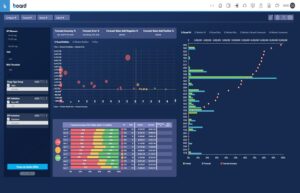Introduction
Software functional testing is an integral part of software development, ensuring that an application performs its intended functions correctly. However, no matter how well you design and code your software, bugs are bound to surface. Effective bug tracking and reporting are crucial aspects of the application functional testing process. In this blog, we will delve into the importance of bug tracking, discuss the key steps for effective bug tracking and reporting, and explore some best practices to streamline this critical phase of functional testing services.
The Importance of Bug Tracking
Bug tracking is essential for several reasons:
- Quality Assurance: Bug tracking is fundamental to ensuring software quality. It helps identify and eliminate issues that could negatively impact the user experience.
- Communication: It acts as a communication bridge between different stakeholders, including developers, testers, product managers, and customers, by providing a centralized platform for issue reporting and resolution.
- Continuous Improvement: Tracking bugs provides valuable data for ongoing improvement. By identifying recurring issues or patterns, teams can make informed decisions to prevent similar bugs in future releases.
- Prioritization: Not all bugs are created equal. Bug tracking helps prioritize issues based on severity and impact, ensuring that critical problems are addressed promptly.
Effective Bug Tracking and Reporting
Now, let’s explore the key steps for effective bug tracking and reporting in manual functional testing:
1. Identify and Reproduce
Before reporting a bug, testers must be able to consistently reproduce the issue. This step is crucial because it confirms that the problem is not an isolated incident and provides developers with a reliable scenario to work with.
2. Document Thoroughly
When documenting a bug, be detailed and clear. Include information like the steps to reproduce, expected behavior, actual behavior, environment details, and any relevant screenshots or logs. The more information you provide, the easier it will be for developers to understand and fix the issue.
3. Use a Bug Tracking System
A dedicated bug tracking system, such as JIRA, Bugzilla, or Trello, is essential for organized bug management. These tools allow you to create, assign, and track bugs throughout their lifecycle. They also provide dashboards and reports for better visibility.
4. Prioritize Bugs
Not all bugs are equally critical. Collaborate with your team to prioritize bugs based on severity, impact on users, and project timelines. This ensures that the most critical issues are addressed first.
5. Assign Ownership
Assign bugs to the responsible developers or teams promptly. Clear ownership helps prevent confusion and ensures accountability for bug resolution.
6. Monitor Progress
Stay informed about the status of reported bugs. Use the bug tracking system to check for updates, comments, and resolutions regularly. This ensures that bugs are not forgotten or left unattended.
7. Test Fixes
Once a bug is marked as fixed, conduct regression testing to verify that the issue is indeed resolved and that no new issues have been introduced.
8. Close Bugs
When a bug is confirmed fixed, close it in the bug tracking system. Provide feedback and thank the developer for their work. Closed bugs should be part of a release notes document, informing users about the improvements.
9. Communicate with Stakeholders
Keep stakeholders, including project managers and customers, informed about bug status and resolution progress. Transparency builds trust and ensures everyone is on the same page.
10. Analyze and Learn
After a testing cycle or project, take time to analyze the bug tracking data. Look for trends or common issues that can help improve development processes and reduce the occurrence of similar bugs in the future.
Best Practices for Effective Bug Tracking and Reporting
To further enhance the bug tracking and reporting process, consider implementing these best practices:
1. Standardized Bug Report Template
Create a standardized bug report template that includes all the necessary fields to streamline bug documentation. This ensures consistency and makes it easier for testers to report bugs effectively.
2. Automated Bug Capture
Leverage automation to capture and report bugs whenever possible. Tools like Selenium and Appium can automatically capture screenshots and logs when a test case fails, reducing the manual testing effort required.
3. Regular Bug Triage Meetings
Hold regular bug triage meetings to review and prioritize reported bugs as a team. This helps maintain focus on the most critical issues and prevents the backlog from growing unmanageable.
4. Continuous Training
Provide training to testers on effective bug reporting techniques. Encourage them to ask questions and seek clarification when needed to ensure accurate bug documentation.
5. User-Focused Bug Reporting
Encourage users and beta testers to report bugs through user-friendly channels, such as in-app bug reporting or feedback forms. Make it easy for them to provide valuable input.
Conclusion
Effective bug tracking and reporting are essential for delivering high-quality software. By following the steps outlined in this blog and implementing best practices, you can streamline the bug management process, enhance communication among team members, and ultimately deliver a more reliable and user-friendly product. Remember, bug tracking is not just about finding and fixing issues; it’s about continuously improving your software development process.



